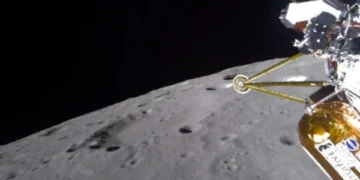Washington: Scientists have proposed a plan to spread ice in the atmosphere to combat climate change.
Under this method, planes will be sent to a height of 58,000 feet above the ground and ice particles will be sprayed on the upper part of the atmosphere.
According to the plan, these particles will freeze water and evaporate it before it turns into greenhouse gases, which prevent the gas from escaping into space and cause a rise in temperatures on Earth.
The ice particles will fall back to the ground after freezing the water. Doing so would reduce excess water vapor and dry out the stratosphere, where water turns into a heat-trapping gas.
The project is a joint venture between NASA and the National Oceanic and Atmospheric Administration (NOAA).
The idea of drying the upper atmosphere is an extension of the way scientists deal with climate change.
All these methods, known as geoengineering, are rejected because of potential harms and are considered as additional methods to reduce emissions rather than as alternatives to reducing carbon pollution.
According to Joshua Schwartz, a physicist at NOAA and lead author of the study, the plan is not something that can be implemented immediately. It is about anticipatory discovery of future possibilities.

























